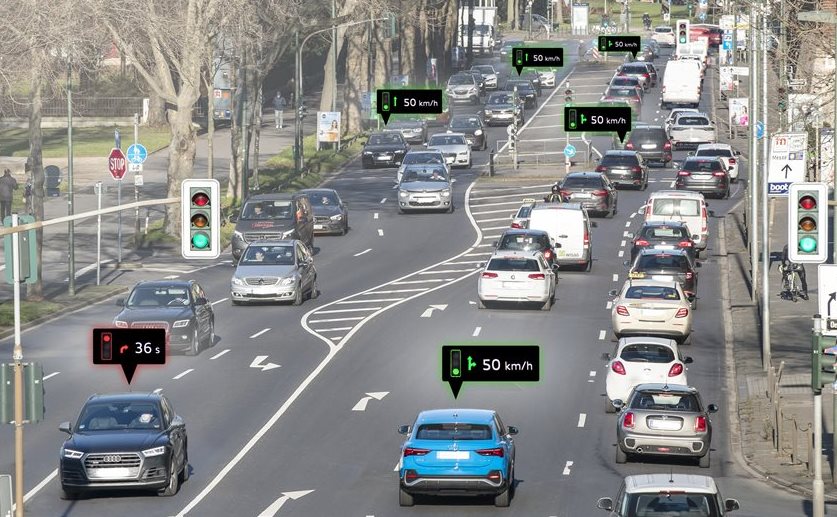Audi introduces Traffic Light Information service in Düsseldorf

Audi Traffic Light Information is a vehicle-to-infrastructure service that increases efficiency, convenience and safety on roads. Most of the intersections in Düsseldorf, approximately 450 out of a total of some 600 installations, will be networked.
Audi and its project partner Traffic Technology Services (TTS) have developed a complex analytical algorithm that calculates exact predictions from three sources: from the control programme of the traffic signals; from the real-time data of the traffic computer, a combination of road-occupation cameras, detector strips in the road surface, data on approaching buses and trams, and buttons that pedestrians press; as well as from historical data.
The forecast algorithm improves itself continuously and learns how, for example, the traffic volume changes in morning commuter traffic or at midday when children leave nurseries and schools.
In future, the cities, too, will receive useful information about its traffic light infrastructure. The data show, for example, whether cars stop unusually often at a particular intersection or whether the average waiting time is comparatively long.
The functions of the service
The service consists of two functions: Green Light Optimised Speed Advisory (Glosa) and Time-to-Green. Glosa calculates the ideal speed for getting a “green wave”. For example, if the function indicates the applicable speed limit, the next traffic light will be reached at green. Drivers do not have to accelerate unnecessarily, they are not stressed, and they drive more safely.
Glosa can also suggest reducing speed gradually about 250m ahead of the traffic lights so that the driver and the cars behind reach the intersection when the lights turn to green. This reduces uneconomical stop-and-go traffic.
If stopping at a red light is unavoidable, a countdown displays the seconds remaining until the next green phase begins (Time-to-Green). Drivers can relax, take their foot off the gas pedal and save fuel. A number of studies conclude that drivers move through cities more efficiently with networked traffic lights. In a pilot project, Audi was able to reduce fuel consumption by 15%.
Existing places of the service
Audi Traffic Light Information premiered in 2016 in Las Vegas. Today this service is available at more than 10,000 intersections in North America, including some 2,000 in Manhattan/New York City and more than 1,600 around the US capital Washington D.C. Audi is also the world’s first automotive manufacturer to network its series-production models with city traffic lights.
Audi Traffic Light Information operates in all Audi E-Tron, A4, A6, A7, A8, Q3, Q7 and Q8 models that have been produced since mid-July 2019 (the 2020 model year). The pre-requisites are the Audi connect Navigation and Infotainment package and the optional camera-based traffic-sign recognition.












